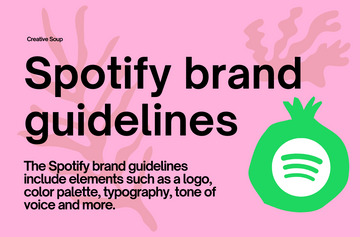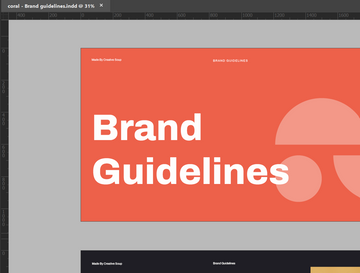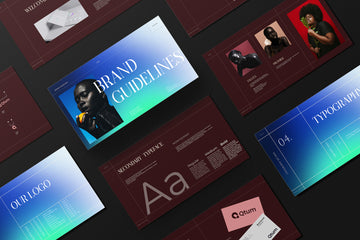1. Introduction
In the ever-evolving world of graphic design, talent and creativity alone may not suffice to carve a successful career. Networking for graphic designers has emerged as a powerful tool that can open doors to a multitude of opportunities. In this article, we will explore the significance of networking and how designers can use it to connect with potential clients, thereby fostering their professional growth.
2. Building a Strong Professional Network

Attending Industry Events and Conferences
Participating in design-related events and conferences is an excellent way to expand your network. Such gatherings bring together like-minded individuals, offering opportunities to meet fellow designers, industry veterans, and potential clients. Engaging in conversations and exchanging ideas during these events can leave a lasting impression and create fruitful connections.
Joining Design Associations and Groups
Design associations and online groups serve as hubs for networking. These communities are designed to facilitate interactions among designers, where you can share experiences, seek advice, and collaborate on projects. By actively participating in these communities, you can build valuable relationships that may lead to client referrals and collaborations.
Utilizing Social Media Platforms
In the digital age, social media platforms play a crucial role in networking. Building a strong presence on platforms like Instagram, Behance, and Dribbble allows designers to showcase their portfolios, interact with potential clients, and engage with the design community. Consistent and authentic engagement can significantly boost your chances of being noticed by prospective clients.
Participating in Online Design Forums
Online design forums provide an avenue to connect with designers from across the globe. By sharing your expertise and contributing to discussions, you can position yourself as an authority in your niche. This reputation can attract potential clients who are seeking specific design services.
3. Creating Meaningful Connections

Engaging in Conversations
When networking, focus on building meaningful relationships rather than merely exchanging business cards. Engage in genuine conversations, show interest in others' work, and actively listen to their stories. Authentic connections often lead to long-lasting professional relationships.
Offering Help and Support
Networking should not be solely driven by personal gain. Be willing to offer help and support to fellow designers when they need it. Providing value to others can create a positive impression and foster reciprocity in the future.
Collaborating on Projects
Collaborative projects offer a chance to work with other designers or agencies, allowing you to expand your portfolio and enhance your skills. Moreover, joint ventures can expose your work to a broader audience and attract potential clients.
Sharing Knowledge and Expertise
Contributing to the design community by sharing valuable insights and knowledge is a great way to establish yourself as a thought leader. Whether through blog posts, tutorials, or workshops, sharing expertise can elevate your profile in the industry.
4. Leveraging Networking to Find Clients

Referrals from Peers and Clients
Word-of-mouth referrals are powerful for graphic designers. Satisfied clients and peers who recognize your talent may recommend your services to others. Nurturing strong relationships within your network increases the likelihood of receiving such referrals.
Showcasing Your Portfolio
Your portfolio serves as a visual representation of your skills and style. Ensure it is up to date and showcases your best work. When you meet potential clients through networking, having an impressive portfolio can make a lasting impression.
Sending Personalized Cold Emails
While cold emailing may seem daunting, it can be an effective way to reach out to potential clients. Personalize each email to demonstrate genuine interest in their business and how you can contribute through your design expertise.
Leveraging LinkedIn for Opportunities
LinkedIn is a valuable platform for professional networking. Optimize your profile to highlight your skills, experiences, and achievements. Engage with relevant industry groups and connect with potential clients or partners.
5. The Impact of Networking on Professional Growth
Learning from Industry Leaders
Networking opportunities often include access to industry leaders and experts. Attend workshops, seminars, or webinars conducted by professionals you admire to gain insights and stay updated on industry trends.
Gaining Insights into Emerging Trends
Through networking, you can stay informed about the latest trends in design and technology. Being early to adopt emerging trends can set you apart from your competition.
Receiving Constructive Feedback
Networking also provides an avenue to seek feedback on your work. Constructive criticism from peers and mentors can help you improve your skills and deliver better results to your clients.
Building Confidence and Visibility
As your network expands, so does your visibility in the industry. Increased recognition can boost your confidence and encourage you to take on more significant challenges.
6. Overcoming Networking Challenges
Dealing with Social Anxiety
Networking events can be intimidating, especially for those with social anxiety. Practice mindfulness and positive self-talk to overcome such hurdles and focus on the potential benefits of networking.
Finding Time for Networking
Balancing networking activities with client projects can be challenging. Prioritize networking efforts and allocate specific time for building and nurturing your professional connections.
Handling Rejections and Setbacks
Not every networking endeavor will lead to immediate success. It is essential to handle rejections and setbacks with resilience, as networking is a gradual process.
Maintaining Genuine Connections
As your network grows, it can become challenging to maintain personal connections with everyone. Focus on a few core relationships and ensure your interactions remain authentic.
7. Networking Etiquette and Best Practices
Being Authentic and Transparent
Honesty and transparency are fundamental in networking. Be genuine about your intentions and avoid coming across as opportunistic.
Following Up and Keeping in Touch
After networking events or meetings, follow up with the individuals you connected with. Keeping in touch helps strengthen relationships and reinforces your presence in their minds.
Giving as Much as You Take
Networking should not be a one-way street. Offer assistance or support to others in your network, just as you expect the same from them.
Respecting Others' Boundaries
Understand that not everyone may be open to networking at all times. Respect their boundaries and avoid being overly pushy.
8. Conclusion
Networking is an indispensable aspect of a graphic designer's journey to success. By actively building and nurturing professional connections, designers can expand their opportunities, find potential clients, and grow both personally and professionally. Embrace the power of networking and take proactive steps to develop a strong network that propels your design career forward.
FAQs
-
Why is networking crucial for graphic designers? Networking allows graphic designers to make valuable connections, find potential clients, and stay updated on industry trends, which can contribute significantly to their professional growth.
-
How can I overcome social anxiety during networking events? Practice mindfulness and positive self-talk, focus on the value of networking, and start with smaller, less intimidating gatherings to gradually build your confidence.
-
What should I include in my design portfolio to attract clients? Your portfolio should showcase your best and most relevant work, reflecting your unique style and skills.
-
How often should I follow up with new contacts after networking events? Follow up within a week after the event to express gratitude and express your interest in staying connected.
-
Is cold emailing an effective way to find clients? Yes, when done correctly, personalized cold emails can be an effective means to reach out to potential clients and showcase your design services.
Unlock the Secret to Passive Income: 5 Strategies for Designers
3 Brand Guidelines Template Canva, Examples For Consistent Branding
8 Famous Free Fonts Used by Leading Companies





